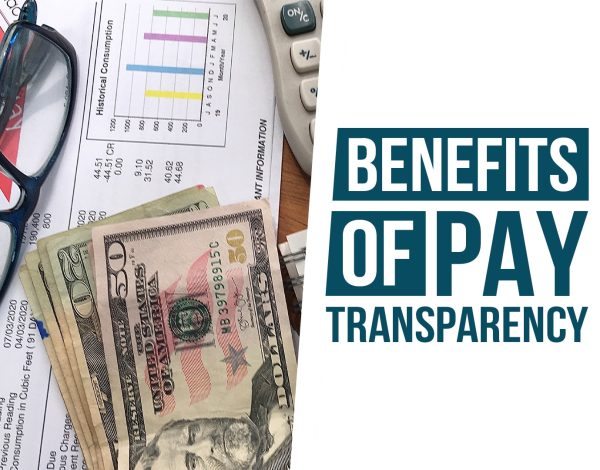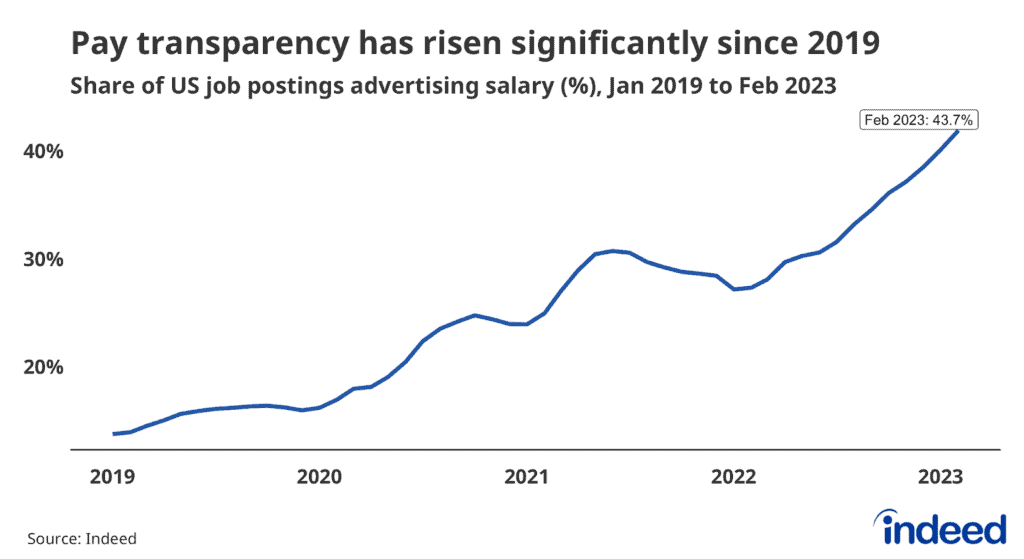In many places around the world, employers don’t share salary details. There are several reasons for this practice. According to FlexJobs, some employers choose not to disclose salary information to attract a wider range of applicants or to avoid being locked into a high salary expectation.
Additionally, companies think that pay secrecy stops jealousy among workers and keeps costs down because if workers don’t know what others earn, they’re less likely to ask for more money. However, it’s important to note that employees have the right to discuss wages among themselves. As noted by the National Labor Relations Board and Insperity, employers cannot forbid employees from discussing salaries or other job conditions among themselves.
Furthermore, according to Jackson Spencer Law and Nolo, it is illegal for employers to ban their employees from discussing pay, despite the persistence of workplace “gag rules”. However, some employers still attempt to maintain salary secrecy due to perceived advantages. These advantages could include avoiding internal conflicts or preventing salary inflation.
But this secrecy can cause problems, too. While pay secrecy may initially seem beneficial to some companies, it can lead to significant disadvantages in the long run.
The Disadvantages of Pay Secrecy
Firstly, pay secrecy can breed distrust and dissatisfaction among employees. If they suspect or discover pay disparities, it can lead to feelings of inequity and resentment, which can negatively impact morale and productivity. Secondly, pay secrecy can inadvertently foster wage discrimination, as it becomes challenging to identify and rectify pay gaps based on gender, race, or other protected characteristics.
Additionally, the lack of transparency might deter top-tier talent from joining the organization. High-performing potential employees value fairness and openness about compensation, and the absence of this could make a company less appealing.
Lastly, when salary information is hidden, employees cannot make informed decisions about their career progression and whether they are being compensated fairly for their contributions. This lack of clarity can result in high turnover rates, as employees seek better opportunities elsewhere. Hence, while pay secrecy might offer short-term benefits to employers, it often leads to detrimental effects on employee satisfaction, trust, and retention in the long term.
Did you know?
According to a report by IWPR, 20% of companies have gag orders to discourage the sharing of salary information.
A gag order is a legal directive that restricts individuals from publicly discussing certain information.
What Is Pay Transparency?
On the other hand, there’s pay transparency. Pay transparency, the practice of openly sharing pay information within a company, is crucial in fostering trust and fairness among employees. By providing insights into salaries, wages, and other forms of compensation, it ensures equitable remuneration and helps eliminate potential discrimination based on gender, race, or other factors. This transparency can also aid in reducing wage gaps among different employee groups.
It’s worth noting that pay transparency has been on the rise in recent years. As supported by the Society for Human Resource Management (SHRM) data, 70% of organizations that include pay ranges in their job postings have witnessed an uptick in applicants. SHRM also found that such transparency in job postings could enhance recruitment efforts and yield better business outcomes.
Globally, the concept of pay transparency is well-received among employees. According to Glassdoor’s Global Salary Transparency Survey, 70% of employees across seven countries are in favor of this practice.
In the US, the scope of pay transparency laws has broadened, now covering more than a quarter of all workers. Indeed reported a significant increase in the number of job postings providing pay details, which rose from 18.4% in February 2020 to 43.7% by February 2023.
Additionally, several states and local jurisdictions have enacted pay transparency laws as part of efforts to address unequal pay, including Rhode Island.
The Benefits of Pay Transparency
Pay transparency offers numerous benefits, both to employees and organizations. Let’s dive into the key benefits:
- Enhanced Job Satisfaction: Pay transparency necessitates a fair pay structure. Companies might need to narrow the gender pay gap or increase wages for underpaid workers. When companies take these steps towards pay equity, employees are more likely to feel they are paid fairly. Transparency also allows employees to compare their salaries and the company’s pay structure against market standards.
- Improved Employee Performance: In a transparent company, employees understand why they are paid a certain amount and how they can move up the pay scale. This clarity motivates them to put in extra effort, produce high-quality work, improve their metrics, or acquire new skills. Over 80% of workers report that fair pay boosts their productivity, which can enhance the organization’s competitiveness, reputation, and profitability.
- Reduced Pay Discrimination: Pay transparency can mitigate unconscious bias that leads to pay discrimination based on gender, race, religion, nationality, etc. With pay decisions visible to everyone, there’s a higher likelihood of double-checking decisions and setting clear, objective standards.
- Increased Trust and Collaboration: Pay transparency can improve employer-employee relationships, boost employee loyalty, and morale. It fosters trust and collaboration among employees, creating a level playing field. This environment reduces jealousy, resentment, or rivalry, promoting efficient, productive, and harmonious working conditions.
- Recruitment Advantage: Pay transparency can give employers an edge in recruitment. Many job postings advertise a “competitive salary,” but often lack specific figures. With pay transparency, applicants have a clearer understanding of what to expect, which can lead to a better impression of the company and a higher chance of accepting the job offer.
However, it’s important to remember that while pay transparency has many benefits, it must be implemented carefully to avoid potential backlash or unintended consequences. Each organization should consider its unique circumstances, culture, and workforce when deciding how to approach pay transparency.
Rhode Island's Pay Transparency Laws
Pay transparency is an important concept in the workplace, and Rhode Island has taken steps to ensure that its citizens are protected. Rhode Island’s Pay Transparency law, also known as the Pay Equity Act, was expanded in 2022 and came into effect on January 1, 2023. The law places additional requirements on employers to prevent wage discrimination.
One of the key provisions of this law is that it prohibits Rhode Island employers from asking applicants about their salary histories before making a job offer. This is intended to prevent the perpetuation of wage gaps that may have affected applicants in previous jobs.
The new law also prohibits employers from depending on an applicant’s wage history when deciding whether to consider them for a position or determine their salary. This means that employers must base their decisions on the applicant’s qualifications, skills, and experience, rather than what they were paid in the past.
Furthermore, the law calls for wage transparency in the workplace. It makes it unlawful for employers to prevent employees from inquiring about, discussing, or disclosing their wages or the wages of others.
Lastly, the legislation requires more transparency from employers regarding wage ranges. Now, employers must provide a wage range when an employee is hired, a current employee moves into a new position, and/or upon the employee’s request. The employer also must provide a wage range upon an applicant’s request and “should” provide a wage range to an applicant prior to discussing compensation.
In conclusion, Rhode Island’s Pay Transparency law is a significant step toward wage equality, promoting openness and fairness in the workplace by ensuring that employers provide clear information about wage ranges. This transparency aims to empower employees and applicants alike, fostering a more equitable environment where compensation is based on merit rather than past salaries or undisclosed factors.









